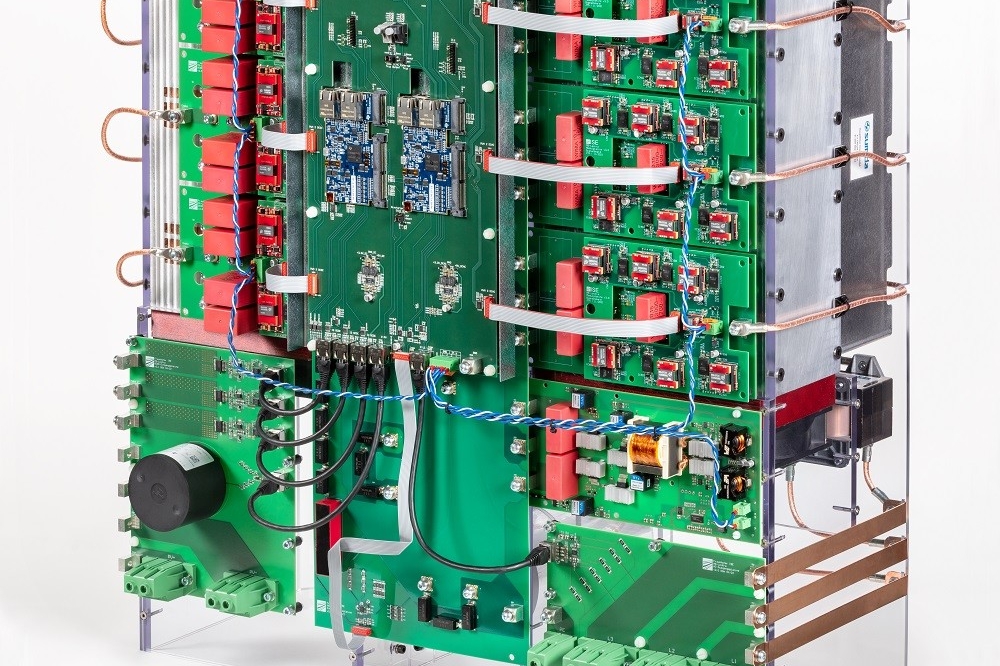SiC is key to novel string inverter

MS-LeiKra project team develops first medium-voltage string inverter for large-scale power plants
The Fraunhofer Institute for Solar Energy Systems ISE has developed and successfully commissioned the world’s first medium-voltage string inverter for large-scale power plants.
By feeding power into the medium-voltage grid, the MS-LeiKra project team has demonstrated that PV inverters are technically capable of handling higher voltage levels.
They say that the benefits for photovoltaics include enormous cost and resource savings for passive components and cables. The device lays the foundation for a new system concept for the next generation of large-scale PV power plants, which can also be applied to wind turbines, electric mobility and industrial applications.
Modern PV string inverters have an output voltage of between 400 VAC and 800 VAC. Although the output of power plants is steadily growing, voltage has not yet been increased. There are two reasons for this: First, building a highly efficient and compact inverter based on silicon semiconductors is a challenge. Second, there are currently no PV-specific standards that cover only the low-voltage range (max. 1,500 VDC / 1,000 VAC).
The project, funded by the German Federal Ministry for Economic Affairs and Climate Action (BMWK), involves Fraunhofer ISE, in collaboration with Siemens and Sumida. The inverter enables the output voltage to be increased to the medium-voltage range (1,500 V) at 250 kVA. The key to this is the use of SiC semiconductors, which have a higher blocking voltage.
The research team has also implemented a more efficient cooling concept using heat pipes, which reduces the amount of aluminum required.
With the MS LeiKra project, the researchers say they are leaving the scope of low-voltage (<1000 VAC / <1500 VDC) standards. There are currently no PV-specific standards for this range. The project team is also working on the standards that would result from increasing the voltage.
Having fed power into the medium-voltage grid successfully, the research team is now looking for solar farm developers and grid operators to test the power plant concept in the field.


































